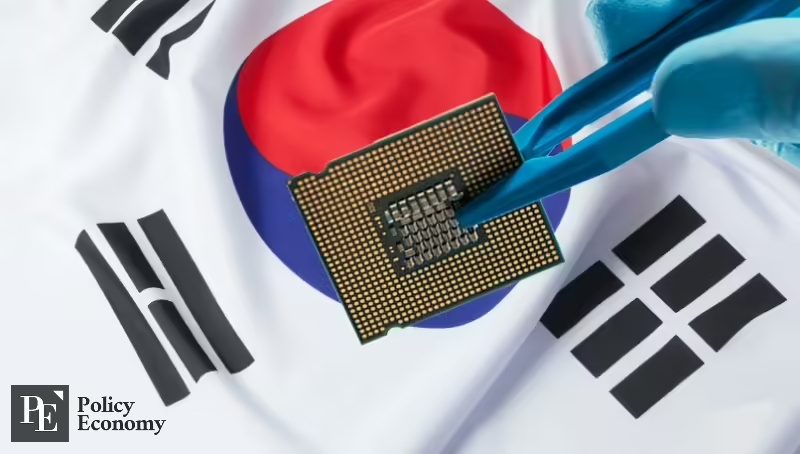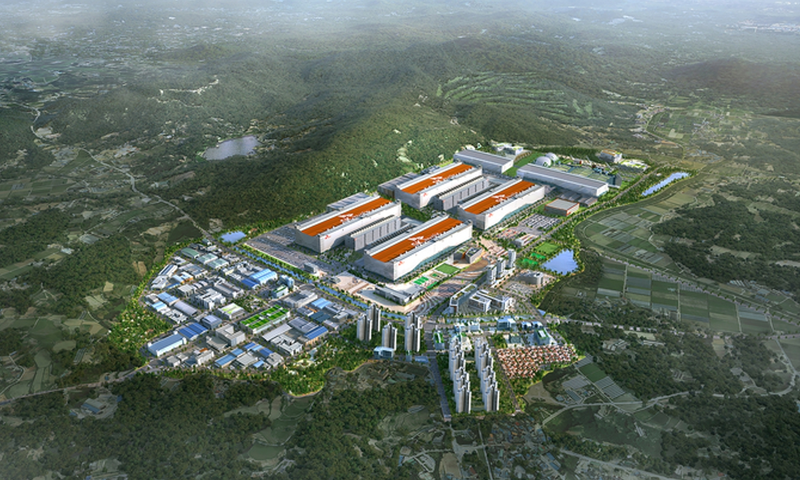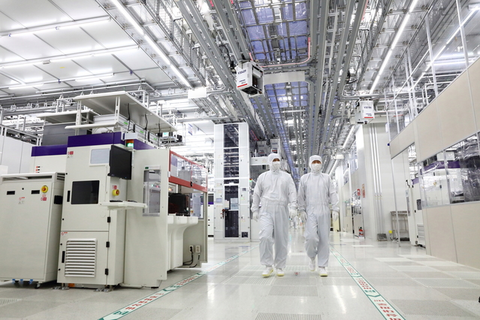Lee Jae-myung Administration Declares ‘Semiconductors Are Our Future’—Accelerates Industrial Transformation with Production Tax Credits and Mega-Cluster Initiative
Input
Modified
Tax incentives to shift from investment-based to production-based metrics Establishing a mega-cluster in southern Gyeonggi Province as a key priority Special legislation required to provide legal grounds for tax credits and other support

The Lee Jae-myung administration, which identified strengthening the semiconductor industry as its top policy pledge, is now accelerating related support initiatives. The government is pushing to shift the basis for tax incentives from investment volume to production output, while also fast-tracking plans to establish the world’s largest semiconductor mega-cluster in southern Gyeonggi Province. These moves are being seen as strategic efforts to bolster the global competitiveness of domestic firms amid ongoing supply chain realignments. Industry insiders are closely watching for the potential revival of legislative efforts and the broader ripple effects across the sector.
Production-Based Tax Credits Inspired by U.S. IRA
According to the semiconductor industry on the 18th, if President Lee Jae-myung’s campaign pledge for tax credits on semiconductor production is realized, it is expected to significantly strengthen the global competitiveness of South Korean companies. Traditionally, tax incentives for national strategic technologies have been based on investment amounts. However, this proposal marks a shift toward production-based tax credits, mirroring the structure of the U.S. Inflation Reduction Act (IRA). Industry analysts estimate that such a policy could result in tax savings of approximately USD 6.5 billion for companies like Samsung Electronics and SK Hynix.
As part of his presidential campaign, President Lee pledged to: establish a comprehensive semiconductor ecosystem hub; maintain a technology edge in AI semiconductors like High Bandwidth Memory (HBM) and bolster support for promising fabless startups.
The initiative includes a government-led, full-spectrum support framework for all aspects of the semiconductor industry, from fabless design and foundry services to advanced packaging. Key goals include enhancing capabilities in next-generation technologies such as sub-2nm process nodes and establishing a “K-Fabless Valley” in Pangyo.
The government also plans to grow the materials, components, and equipment (MCE) sector. In advanced processes, MCE is a decisive factor influencing quality, yield, and production schedules. Therefore, achieving technological self-reliance in MCE is viewed as a prerequisite for global competitiveness. The government aims to: build mini-fabs for pilot production, link MCE companies with production pipelines, and expand the system semiconductor ecosystem through targeted R&D support. This will be bolstered by creating R&D infrastructure, enhancing regional testbeds, and developing industry-aligned workforce training programs to help domestic MCE companies grow into global players.
President Lee Jae-myung Emphasizes the Enactment of the Special Semiconductor Act
President Lee Jae-myung has underscored the urgent need to enact the Special Semiconductor Act, a core campaign pledge designed to underpin key government support measures such as production-based tax credits and the rapid development of a semiconductor mega-cluster. In April, the Democratic Party fast-tracked a revised version of the bill that includes provisions to: establish a National Semiconductor Committee, mandate government support for critical infrastructure such as electricity, water, and transportation, provide subsidies for renewable energy installations to reduce greenhouse gas emissions, and create a Semiconductor Industry Support Fund and promote regional cooperation projects
However, the bill stalled due to a political deadlock over one major issue: whether to grant an exemption from the 52-hour maximum workweek rule for R&D personnel. While opposition parties like the Democratic Party argued for passing the already-agreed components—such as tax incentives and infrastructure support—the ruling People Power Party insisted the exemption was essential. The government also took a firm stance, saying the law would lose its effectiveness without this clause. Meanwhile, labor unions strongly opposed expanding exemptions to the work hour cap.
Despite the legislative impasse, industry insiders remain optimistic about a renewed push to pass the bill. President Lee has consistently shown strong commitment to the legislation since his candidacy, declaring that “protecting semiconductors is protecting our future” and vowing to pass the bill pending in the National Assembly swiftly.
After winning his party’s nomination, President Lee made a symbolic first economic visit to SK Hynix’s Icheon campus, where he met directly with industry leaders and reaffirmed his intention to secure Korea’s global semiconductor competitiveness through bold support policies and regulatory reforms.

Real Estate Heats Up Amid Semiconductor Cluster Development
One of the key national initiatives under the Lee Jae-myung administration’s semiconductor support policy is the timely creation of a semiconductor mega-cluster. The plan envisions building a fully integrated ecosystem covering the entire value chain—from R&D to design, testing, and mass production—centered in the southern Gyeonggi region, including Seongnam, Suwon, Yongin, Hwaseong, Pyeongtaek, and Anseong. While the previous administration had also promoted this as a strategic national project through tax incentives and streamlined permitting processes, the current government is expected to accelerate the plan significantly.
According to the government’s roadmap, private sector giants such as Samsung Electronics and SK Hynix are expected to invest a total of USD 450 billion by 2047. The investments will focus on building the world’s largest and most advanced semiconductor cluster in areas such as Namsa and Wonsam in Yongin and Godeok in Pyeongtaek. In support of this initiative, the Gyeonggi Provincial Government has requested the central administration’s assistance in rapidly expanding essential infrastructure—such as roads, water supply, and electricity—for the Yongin and Pyeongtaek national strategic industrial complexes. It also requested streamlined permitting for the planned materials, components, and equipment (MCE) cluster on agricultural land in Anseong.
As anticipation for the mega-cluster project intensifies, the real estate market in southern Gyeonggi Province is showing notable signs of activity. In cluster-designated or adjacent cities like Yongin, Pyeongtaek, and Icheon, expectations of population inflow and new company entries tied to large-scale industrial developments are fueling increased apartment transactions. Newly launched apartment complexes are rapidly selling out. For example, Yongin’s apartment transaction volume surged 28.3% year-over-year, the highest increase in Gyeonggi Province, and this momentum has continued into the current year, with rising transaction prices.
Large-scale knowledge industry centers and commercial properties are also enjoying high contract rates and strong investment interest. One such example is the Shin Gwanggyo Cloud City complex in Yeongdeok-dong, Giheung-gu, Yongin. This development, scheduled to be the largest knowledge industry center in southern Seoul's metropolitan area, will span six basement levels and 33 above-ground floors across five buildings, with a total floor area of approximately 350,000㎡. Sales have been robust, with rising contract rates projected into the first half of 2025.
Industry experts forecast that as the mega-cluster development progresses, demand for housing, commercial, and office space will rise in tandem, creating a trickle-down effect across the local economy of southern Gyeonggi Province. The real estate boom is thus expected to continue as the semiconductor cluster becomes a tangible growth engine for the region.





















